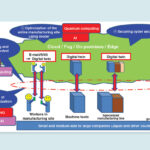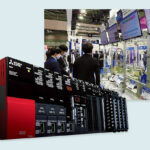ASIA ELECTRONICS INDUSTRYYOUR WINDOW TO SMART MANUFACTURING
Mitsubishi Electric to Build New Production Site for FA Products
Mitsubishi Electric Corporation has decided to establish a new production site for the manufacture of factory automation (FA) control system products from April 2025. In relation, the company has acquired 42,000sq.m of land in Owariasahi City, in Japan’s Aichi Prefecture.

Anticipated Demand for FA Products
Demand from the manufacturing industry for FA products is expected to show medium- to long-term growth. This trend is anticipated in digital sectors, like semiconductors, electronic components, and data centers. It also includes decarbonization related fields, like lithium ion batteries.
To meet increasing demands, Mitsubishi Electric will invest approximately 13 billion yen (US$110 million) to establish a new production site in Owariasahi City. The new production site neighbors Nagoya where its main FA production site, Nagoya Works, is located.
Equipped with Advanced Automation Technologies
The new factory will use several advanced technologies, such as fifth-generation (5G) communication. 5G would allow simultaneous connection of various machines, human workers, and automated guided vehicles (AGVs) as they perform their manufacturing tasks. In parallel, high-speed, real-time data acquisition throughout the factory will provide data sets on all aspects of the production cycle. In turn, these data will be utilized for AI-based analysis to realize a safe and flexible production environment.
Additionally, the three-story, earthquake-resistant building will incorporate Mitsubishi Electric’s digital manufacturing solution e-F@ctory. This advanced digital approach strongly impacts both the supply chain management (SCM) and engineering chain management (ECM) systems.
For example, it combines information technology (IT) and operational technology (OT) with acquired know-how to achieve an integrated FA environment, which reduces the total cost throughout the production process from design, manufacturing and maintenance. It also helps accelerate the improvement cycle for productivity and quality. This process brings benefits that many manufacturers strive for, like shorter delivery times and higher production quality and efficiency, as well as being able to react flexibly to fluctuations in demand.
Furthermore, the new factory will expand the use of automated production processes. These include fully utilizing AGVs for increased efficiency in logistics, and digital twin technologies for synchronized digital and real-world production.
The factory is expected to achieve carbon neutrality by implementing a range of CO2 reduction activities. Among them include an e-F@ctory based energy monitoring system, and the use of LED lighting, photovoltaic systems and biotopes.




